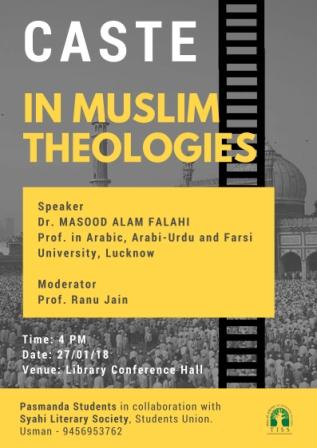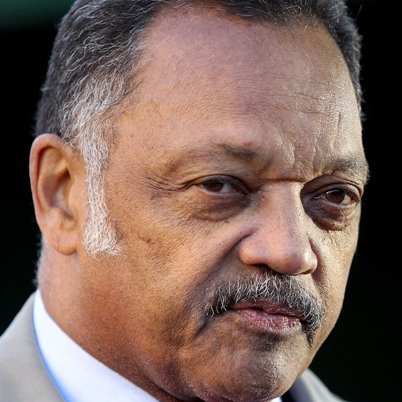Lecture organized by Pasmanda Students in collaboration with Syahi Literary Society, Students Union, on 27 January 2018
At Library Conference Hall,
Tata Institute of Social Sciences (TISS), Mumbai
Caste in Muslim Theology
by
Masood Alam Falahi
Professor, Department of Arabic,
Khwaja Moinuddin Chishti
Urdu, Arabi-Farsi University,
Lucknow

Islam is an egalitarian religion. It does not believe in any kind of identity i.e. nation, family, caste, race, culture. It rejected the concept of superiority in any form.
Although, Islam is fiercely egalitarian in its social ethics, insisting on the radical equality, not only to its believers but all human beings despite of creed, religion and other identity. Indian Muslim society is characterized by numerous caste-like features, consisting of several castes – like groups (jatis, biraderis). Muslims who claim foreign descent, such as the Sayeds, Shaikhs, Mughals and Pathans, claim a superior status for themselves as ashraf or noble’. Descendants of indigenous converts are commonly referred to as ‘ajlaf’ or ‘base’ or ‘lowly’ (for Julahas, Darzi, Kujra, Qasai, etc.) and ‘arzal or Dalit’ i.e. Bhangi, Bakhkho, Bhant, Halalkhor etc.
During the Muslim rule in India, the ‘ashraf’ and ‘high’ caste Hindu converts played a key role in the state administration, as advisors, ministers, governors, army officials, and estate managers. Most of the ulamas and Sufis were also from upper caste strata of the society. On the other hand, despite their conversion to Islam, the social and economic conditions of ‘ajlaf’ and ‘arzal’ Muslims hardly changed and they remained tied down to their traditional occupations as artisans, peasants, labourers and sweepers.
In Musim India, Ajlaf and Arzal (low caste and Dalit) Muslims were exploited not only by their own people, but by the government also. Many great ‘ulama and intellectuals of the past and present, belonging to the various Muslim sects and formations, including Sufis, Shia and Sunni, Aligarh Tahreek (Movement), Deobandi, Barailvi, Ahl-e-Hadith, Jamaa’t-e-Islami and the All-India Muslim Personal Law Board (AIMPLB) supported the caste system either in the name of the supposed superiority of the sadat/ahl-e-bait (people tracing their origin to the Prophet’s daughter Fatima) or the belief that only a person of Quraish descent (Sayeds and Shaikhs) could be the Caliph (king) or ‘upper’ caste could be preferred to be imams in the mosques or through caste-based kufu (endogamy). 99% Sufi shrines belong to Syed caste. The black clour is fixed for Sayed’s turban. Many Ulemas has given fatwas that inter caste marriage is not allowed in Islam and this kind of marriage will be invalid.
The caste system is still alive among Indian Muslims. There are many fragments based on caste. Even the mosques and graveyards are divided on the ground of caste. Every caste wants to give benefits to his own caste. After descriptions in Islamic Theology which discards the caste barrier is no where even though inter-caste marriages are rarely found in Indian Muslims. If any couple goes for an inter-caste marriage they are killed by their family members and social elements only for the sake of preserving their caste ego. Inter-caste marriages which are arranged by parents are very few in numbers and are usually based on materialistic grounds and love affair.
The worst thing is that the Muslim Ulema advocated caste system in the name of Islam and they have given a lot of theological evidences in support of caste system. The paper will focus on Caste in Muslim Theology. It will discuss how did Ulema interpret Qura and Hadith to promote and strengthen caste system.
~~~
[Via Md Khursheed Akbar]










